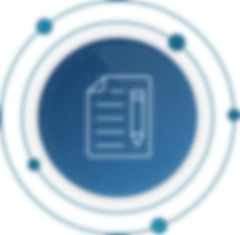Talend API Services
Certified Developer Exam


Talend certification exams measure your skills to ensure that you have the knowledge to successfully implement quality Talend API Services projects. Preparation is critical to passing.
This certification exam covers Talend API Services and API management (API Designer and API Tester), including REST and SOAP services implementation, design and testing of APIs, handling JSON mappings using Talend Data Mapper, Route implementation, and best practices.
Certification exam details
Exam content is updated periodically. The number and difficulty of questions may change. The passing score is adjusted to maintain a consistent standard.
Duration: 90 minutes
Number of questions: 55
Passing score: 70%
Recommended experience
- At least six months of experience using Talend products
- Knowledge and experience with Talend API Services (Routes, SOAP web services, and REST services)
- Background knowledge of Talend Cloud Management Console
- Knowledge of Talend API Management (API Designer and API Tester) and Talend Data Mapper
Preparation
To prepare for this certification exam, Talend recommends:
- Taking the Talend Application Integration Essentials, Talend Application Integration Advanced, Talend Data Mapper Essentials, and Talend Cloud API Services learning plans
- Working through the Talend Academy use case: Handling REST requests and complex mappings in Talend Cloud
- Studying the material in the Talend API Services Certified Developer preparation training module
- Reading the product documentation and Community Knowledge Base articles
Badge
After passing this certification exam, you are awarded the Talend API Services Developer Certified badge. To know more about the criteria to earn this badge, refer to the Talend Academy Badging program page.
Certification exam topics
Overview of Talend API Services
- Explain the role of application integration and the difference between application integration and data integration
- User management and authentication
- Differentiate between services and Routes
- Differentiate between SOAP and REST services (advantages and disadvantages)
- Explain data services components (Talend Runtime and Artifact Repository)
Defining a new API using API Designer
- Explain what API Designer is
- Differentiate between contract first and code first programming
- Define API contracts using API Designer (data types, resources, and operations)
- Import and export API definitions
- Generate API documentation
REST data types
- Create a JSON and an XML structure
- Create a mapping
- Stream data in REST components
Deploying API Services
- Introduction to Microservices
- Publish Microservices versus OSGI bundle
Creating API versioning
- Differentiate between minor and major versioning
- Manage multiple versions
- Interact with version control systems
Debugging Routes
- Create breakpoints
- Control debug flows (stop, start, and review values)
- Monitor debugging
Developing SOAP web services
- Define SOAP web services and what a WSDL file is
- Create a WSDL file with Talend Studio
- Create a SOAP web service
- Implement SOAP operations
- Develop a SOAP consumer Job
- Throw a SOAP fault
Developing REST services
- Define REST services (REST URI, REST endpoint, URI pattern)
- Use REST API definition metadata
- Implement a REST service
- Implement REST operations (GET, PUT, POST, and DELETE)
- Develop a REST consumer Job
Using API Tester
- Explain what API Tester is
- Generate a test project in API Tester from a Talend Studio REST service
- Create API test scenarios (includes the use of dynamic expressions)
- Use test assertions to validate responses
- Automatic API mocking
Establishing Routes
- Define Routes (distinguish between components and processors in Routes compared to Jobs)
- Connection types in Routes (compared to Jobs)
- Define CAMEL messages, exchanges, and SIMPLE language
- Edit message headers and exchange properties
- Implement services in Routes – Apache CXF components
- Provide a web service from a Route resource, using cSOAP or cREST
- Use endpoints in Routes
Defining an API Portal
- Create an API Portal
- Publish an API Portal
- Publish API Services documentation
